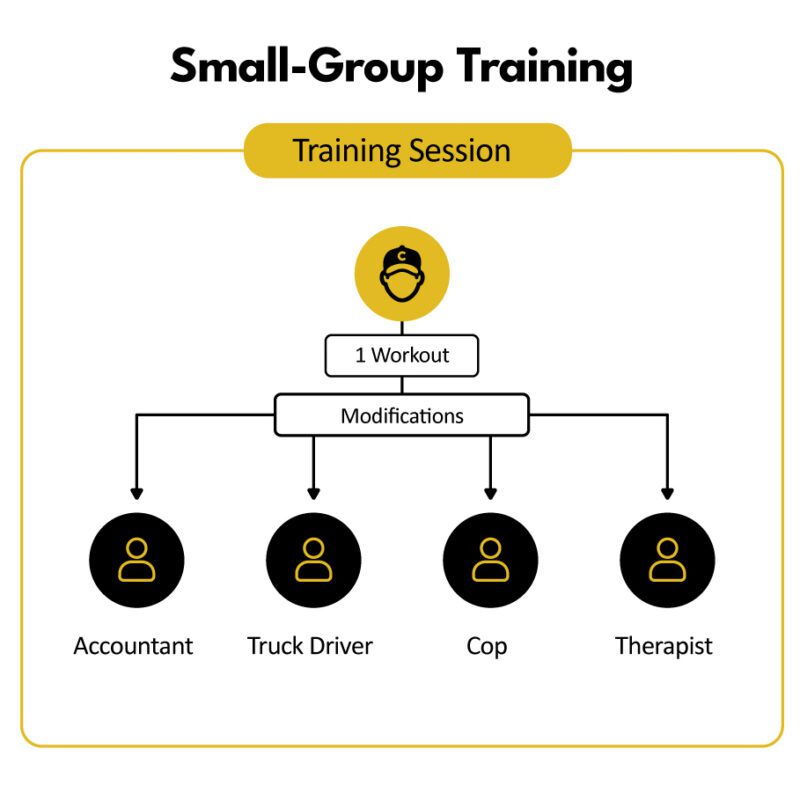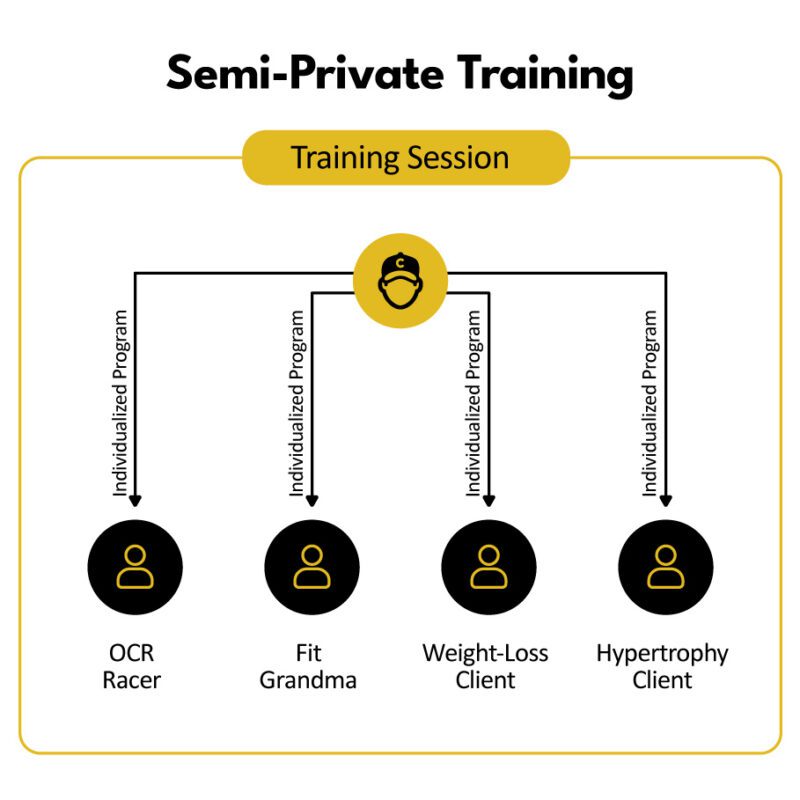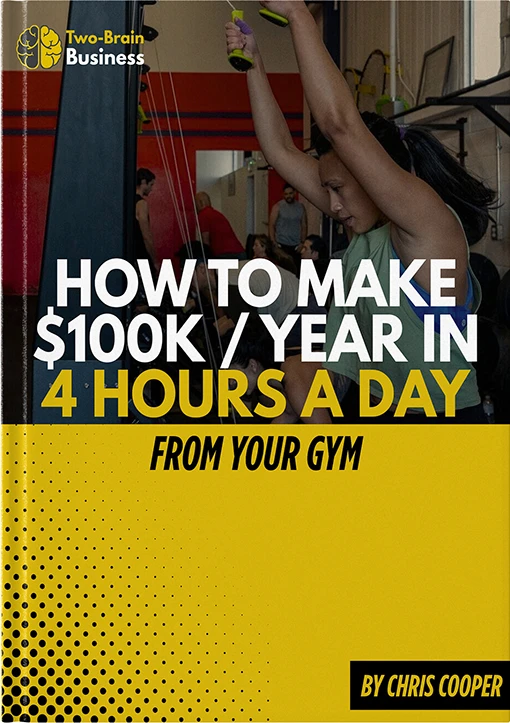In the first post in this series, I told you about the mistake that almost bankrupted me:
I tried to jump from PT to big-group CrossFit classes.
What saved me?
A few of my one-on-one clients said, “I don’t want that.”
So I kept both services as options—and the one-on-one clients kept me afloat while I figured out how to run a business.
What should I have done?
I should have gone from one-on-one to small-group coaching. I just didn’t know the latter existed. And by the time I learned about it, I thought it was too late: I was already offering big classes and one-on-one sessions.
But it’s not too late to move to small-group training if you run big-group classes.
After helping hundreds of “class-based gyms” around the world add small-group coaching, we have a refined process to do it.
Steps to Transition
First, definitions (you can use any terms you like to describe your services):
Small-group training: Everyone in the group of about two to six people is doing the same program.

Semi-private training: Everyone in the group of about two to six people has a different program designed for them.

Step 1—Call your small-group offering “semi-private training.” You might understand the value difference between “small group” and “big group” or “classes”, but your clients probably don’t. Give it a name that’s very different from what they’re currently doing.
Step 2—Start the process with your one-on-one clients. If you’re not offering one-on-one training at your gym, start there. This will slow your progress by a few months, but you need some time to build up your one-on-one coaching skills and clientele. (Follow the instructions from the previous post to move clients from one on one to your small-group program.)
Step 3—Use Goal Review Sessions to move clients from classes to small groups. When you ask the question “are you totally satisfied with your progress?” listen for the “yes, but” and “not really” answers. These are signals that clients could use more direct coaching. Make a new prescription for your semi-private option.
Step 4—Add your small-group option to your pricing binder. Present it as the option to new clients. My pricing binder has three options: one on one (highest price), semi-private (about 10% less, with fully customized programming and individual accountability), and group (the budget option for a client who wants a preset program and coaching in a fun environment with up to 12 others).
Step 5—Talk about your small-group or semi-private training option in your blog, on your YouTube channel and to your email list—but don’t run ads to “semi-private training” or “small-group training.” People buy results, not your method. They don’t need to know if they’ll be working out with you one on one, in a small group or in a big group until they’re in your gym and you give them the option.
Step 6—Give them the option! Remember: Just because you and I like working out in a group doesn’t mean everyone does. Different people prioritize different things.
Here’s a breakdown of benefits—not features—of one on one, semi-private, small group and big classes:
| Schedule Flexibility | Program Customization | Speed to Results | Privacy Level | Support Level | Exciting Group Atmosphere | |
| One on One | Yes | Yes | Highest | High | High | No |
| Semi-Private | Moderate | Yes | High | Medium | Medium | Moderate |
| Small Group | Moderate | No | Medium | Medium | Medium | Moderate |
| Big Group | No | No | Lower | Low | Low | Yes |
Need Help?
Whenever you offer something new, always start from the inside out:
- First, your clients who want something new.
- Then your clients who need something new (but don’t say it out loud).
- Then your new clients who don’t know what you currently offer.
- Then future clients.
Look, you’re going to have more questions.
I flew Two-Brain specialist Brian Bott up to my gym from New Jersey to show me exactly what to do. Mentorship makes the process fast, easy and super effective, and it helps you avoid critical mistakes.
This one big mistake—a poor transition from PT to big groups—nearly bankrupted me.
I made many more costly mistakes, and I can tell you there’s a limit to how many you can make. At some point, the business starts to sink—fast.
Can you really afford not to work with a mentor?
To take the first step and find out how a mentor can solve your business problems, book a call here.

